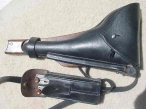
upload photo | donate | calendar
 |
my profile |
register |
faq |
search upload photo | donate | calendar |
|
|||||||
| View Poll Results: Was this post helpful? | |||
| This post was helpful. Thanks for posting. |
|
22 | 100.00% |
| This post was not helpful and you are stupid! |
|
0 | 0% |
| Voters: 22. You may not vote on this poll | |||
 |
|
|
Thread Tools | Display Modes |
|
|
|
|
#1 |
|
Moderator
Lifetime Forum Patron Join Date: Jun 2002
Location: Arizona/Colorado
Posts: 7,775
Thanks: 4,995
Thanked 3,133 Times in 1,439 Posts
|
350 degrees is a dangerous temperature to work with. I beg to differ. It has been tested and proven over the last ten years to be safe and effective used as directed. 350F will not ignite paper. 350F is what it takes to kill the encapsulated spores buried in the interior. The lessor temperature of 160 to 200 will erase the mold flowers..the stuff you see on the surface but you have to remember our mission..to KILL and further reduce another outbreak. A spray with 1/2 vinegar 1/2 water and a quick wipe should kill your spores. Should? The spores are NOT on the surface. They bury themselves..with a spray with 1/2 vinegar 1/2 water and a quick wipe you MISS all the parts you miss..it's unavoidable and IMO this solution is not a proven mold killer and eradicator. You can wipe with a dry cloth and wipe away the flowers. This too is inefective and may even be spreading the problem.
A spray solution is also liable to discolor or stain light colored leather..turn it splotchy. Even plain water will do this. So it's not anything I would do but I hesitate to discourage you from something that works for you. My heat treatment has NEVER failed me. It has always worked with no damage providing the leather is left exposed, NOT enclosed. One thing I will say about it though because I am a student and always wanting to learn. Mold does on occasion return. I cannot for sure attribute this to it migrating onto a clean holster or some spores remained alive? I have some holsters that seemingly you cannot keep mold off. Japanese holsters are particularly vulnerable.. Something about these attracts mold.
__________________
Jerry Burney 11491 S. Guadalupe Drive Yuma AZ 85367-6182 lugerholsterrepair@earthlink.net 928 342-7583 (CO & AZ) Year Round 719 207-3331 (cell)  "For those who Fight For It, Life has a flavor the protected will never know." |
|
|

|
| The following 5 members says Thank You to lugerholsterrepair for your post: |
|
|
#2 | |
|
Twice a Lifer
Lifetime Forum Patron Join Date: Mar 2011
Location: Atop the highest hill in Schuyler County NY
Posts: 3,374
Thanks: 7,447
Thanked 2,613 Times in 1,380 Posts
|
Quote:
I think the success of your method is the two key factors of your instructions: Five minutes, and exposed. I found the chart below, along with some more general discussion of mold. 350 falls somewhere between incineration and an autoclave, but all the times listed are much longer for lesser temps. Your method appears to give a deadly dose of heat to kill the spores, but not so long as to cook off the leather's volatile components--just long enough to "heat it through". Table 1. Recommended use of heat to control bacterial growth (degrees Celsius) Incineration >500o Vaporizes organic material on nonflammable surfaces but may destroy many substances in the process Boiling 100o 30 minutes of boiling kills microbial pathogens and vegetative forms of bacteria but may not kill bacterial endospores Intermittent boiling 100o Three 30-minute intervals of boiling, followed by periods of cooling kills bacterial endospores Autoclave and pressure cooker (steam under pressure) 121o/15 minutes at 15# pressure kills all forms of life including bacterial endospores. The substance being sterilized must be maintained at the effective T for the full time Dry heat (hot air oven) 160o/2 hours For materials that must remain dry and which are not destroyed at T between 121o and 170o Good for glassware, metal, not plastic or rubber items Dry heat (hot air oven) 170o/1 hour Same as above. Note increasing T by 10 degrees shortens the sterilizing time by 50 percent Pasteurization (batch method) 63o/30 minutes kills most vegetative bacterial cells including pathogens such as streptococci, staphylococci and Mycobacterium tuberculosis Pasteurization (flash method) 72o/15 seconds Effect on bacterial cells similar to batch method; for milk, this method is more conducive to industry and has fewer undesirable effects on quality or taste
__________________
"... Liberty is the seed and soil, the air and light, the dew and rain of progress, love and joy."-- Robert Greene Ingersoll 1894 |
|
|
|

|
 |
| Thread Tools | |
| Display Modes | |
|
|